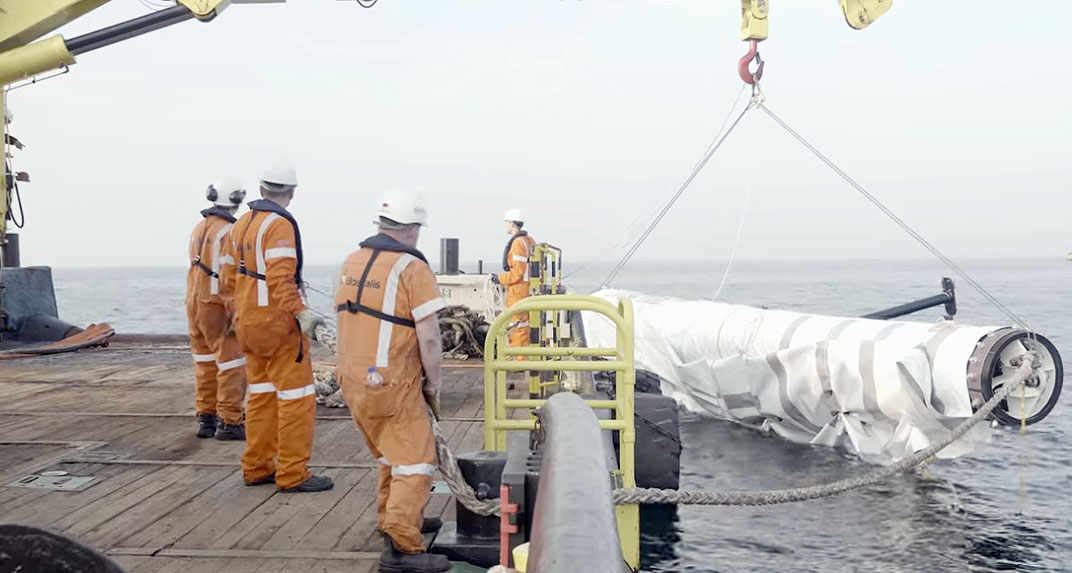
In 2013, Dutch teenager Boyan Slat was on a diving holiday in Greece when he noticed that there was more plastic in the water than fish.
Surprised that no one seemed to be clearing the rubbish up, he investigated further and discovered despair worldwide – people were saying the problem was impossible to solve.
Boyan had found out enough to acknowledge that a cleanup using vessels and nets would be unrealistic and even harmful to marine life. But he didn't take this as a reason not to act. He discovered that there are five major plastic accumulation zones in the world where ocean currents converge – commonly called 'garbage patches'. Boyan came up with the idea of developing a passive concentration system, letting ocean currents be the driving force behind catching and concentrating the plastic.
Boyan was so convinced that his idea was worthwhile that he left university during his first year to found The Ocean Cleanup. He won many supporters when his TEDx video presentation went viral on the internet, and in 2014 an international crowdfunding campaign collected over US $2m to pay for research and development.
The Ocean Cleanup is now a substantial not-for-profit organisation based in the Netherlands, which has been manufacturing and testing 2km-long booms with collection sheets hanging underneath. Due to be deployed in the Great Pacific Garbage Patch later this year, these will move in the same way as the waste plastic in the accumulation zone, slowed by drift anchors at a depth where the current velocities are lower than on the surface. Thanks to this slower pace, the floating barrier will halt the plastic in its course.
Once the array of booms have collected enough plastic, a signal will be sent to Ocean Cleanup’s mission control centre in San Francisco, and a vessel will be sent to pick up the collected waste and transport it back to land for recycling and responsible processing. The eventual aim is for the system to remove at least 50% of the waste plastic in the Great Pacific Garbage Patch.
Tests of the prototypes were carried out in the North Sea in 2016 and 2017 with the participation of Nautilus members at offshore supply company Boskalis, which is a major partner in the project. The North Sea was chosen for its extreme weather conditions, subjecting the booms to even more pressure than they would encounter in the mid-Pacific.
The Ocean Cleanup project has been manufacturing and testing 2km-long booms with collection sheets hanging underneath, which are due to be deployed in the Great Pacific Garbage Patch later this year.
Ocean Cleanup has produced a video on how it is tackling the plastic problem.
For those wondering about the project’s impact on international shipping, The Ocean Cleanup has issued the following statement: 'The moving systems will be equipped with Automatic Identification System (AIS), which is a maritime system allowing them to be noticed by ships and the other systems.
'They will also be equipped with reflectors to make them show up on radar. This will allow for interruptions to be anticipated in advance and mitigate the possibility of collision.
'The Ocean Cleanup and ocean users must respect each other's rights while on the water. We are working with various stakeholders to determine the communication equipment needed, the cleanup systems' area restrictions and the notifications necessary to accommodate our activities and shipping simultaneously.
'The Ocean Cleanup is collaborating with Netherlands Institute for the Law of the Sea (NILOS), who in turn are in close contact with International Maritime Organisation (IMO). Together we can make sure parties crossing the Great Pacific Garbage Patch will be well aware of our cleanup efforts.'
- Find out more about the Ocean Cleanup and follow the deployment of the system in the Pacific, or search for @TheOceanCleanup on Twitter.
Follow this story
-
Environment
21st century plague
- Telegraph
- 29 March 2018
-
Environment
Convincing ferries to cut plastic waste
- Telegraph
- 29 March 2018
-
Environment
Seabin Project – trapping floating plastics in port
- Telegraph
- 29 March 2018
-
Environment
Ocean Cleanup – tackling the plastic problem on the high seas
- Telegraph
- 29 March 2018
-
Environment
GreenSeas Trust – binning plastics on the beach
- Telegraph
- 29 March 2018
Tags
